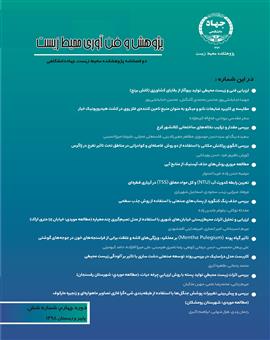A Review of Arsenic Heavy Metal Removal from Water Resources
Subject Areas :
Fariba Ostovar
1
![]() ,
Marzieh Hasanzadeh
2
,
Marzieh Hasanzadeh
2
1 - Faculty member of Environmental Research Institute of ACECR
2 -
Keywords: : Arsenic, Standard, Water Resources, Removal Method, nanoparticles,
Abstract :
Many of the pollutants in the water are known to be harmful and toxic to human and environmental health. Among these pollutants, arsenic is more important because millions of people are exposed to contaminated drinking water. Arsenic is one of the rare elements in the earth crust, which is in the 20th place in abundance, and it's often found in the form of arsenic sulfide or arsenic and arsenide. This element can exist in both organic and inorganic forms, but inorganic arsenic is generally more toxic than its organic form. In various studies, there is a significant relationship between the high concentrations of this element in drinking water, liver, nasal cavity, skin, bladder, and kidneys cancers in men and women body. The World Health Organization (WHO) has identified the lowest standards of arsenic for drinking water below 0.01 mg/L (10 micrograms per liter) in the latest writing of drinking water standards, and the same amount has been reported for arsenic in Iran's 1053 standard. In this study, various techniques for removing arsenic and efficiency of different nanoparticles in the treatment of arsenic from drinking water have been investigated.
